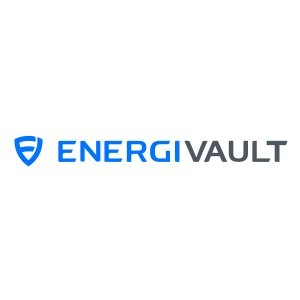Full-scale testing of the EnergiVault cold thermal energy storage system from Organic Heat Exchangers (O-Hx) has seen performance exceed expectations in areas including peak load support, resilience, and reliability.
Benefits
A 650kWh commercial demonstration unit with a cloud dashboard and integration to a building management system was installed at the Alnwick facility of drug development and manufacturing accelerator Quotient Sciences earlier in 2023, with benefits to date including:
- Economic savings from charging with cheaper overnight electricity and from efficient trickle charge of the battery to replace inefficient chiller cycling.
- Continuity of operations under high temperatures/humidity, when previously cooling demand could not be supported by existing systems.
- Resilience from always having cold energy stored on-site, in case of core system failure or shutdown.
A summary of the results is included below, with full data from the ongoing trial available in a newly published white paper highlighting a growing global need for energy storage, which is free to download from the O-Hx website.
Reducing carbon footprint
Had it not been for EnergiVault, that could have caused us some issues"
Stuart Munro, Head of Facilities at the Alnwick site, said, ”Quotient Sciences is committed to reducing its carbon footprint and energy consumption at every opportunity. It is innovations such as the EnergiVault and engineers committed to change that our planet needs now."
“The EnergiVault helped the business in a way we didn’t foresee. This summer, one of the compressors went down in our chillers. We’ve got four compressors so we were 25% down on cooling capacity. Had it not been for EnergiVault, that could have caused us some issues; we would have had to start restricting our cooling to some of the lab and office areas."
Energy savings
"But because we had the redundancy of the EnergiVault in place, we started to pull down on that. The EnergiVault took the place of the broken compressor, while we waited for a replacement from Italy, and saw us through summer."
“During the winter months when cooling loads are lower, our compressors will run to a minimum of 25%. We can’t slow it down any more than that so we’re always going to be using that energy, whether we need to or not. So instead of bringing that compressor on, EnergiVault is taking that small load for us during the day. If we don’t have to fire up our chillers and can use the EnergiVault instead, that should bring substantial savings."
zero negative impact
If we have an off-peak tariff, we can charge up the EnergiVault at night"
“If we have an off-peak tariff, we can charge up the EnergiVault at night, and during the day during the winter months, we don’t have to bring our chillers online at all. We are using this cheaper energy source that we charged up overnight and we’re drawing down on it throughout the day."
“I was fairly nervous at first about the EnergiVault coming in because this site is my responsibility and if we messed up the cooling it could bring down the business. But actually, the communication has been great and there’s been zero negative impact to us. It’s been a really fun, good journey and there’s more to come.’’
full-scale testing
Bob Long, Executive Chairman and founder of O-Hx said, “EnergiVault reveled in the high summer temperatures, displaying the ability to deliver huge amounts of thermal energy in support of struggling cooling equipment."
“We continue full-scale testing at Quotient Sciences, where our performance expectations were surpassed on many levels, including peak load support, resilience, and reliability. With high confidence from this unit, commercialization plans are now in place to be able to meet anticipated demand.’’
proof-of-concept
Develop a full-scale commercial demonstration unit that is working beyond our expectations"
O-Hx Director David Grundy added, “It is quite remarkable what we have achieved. At the start of 2022, we had a small proof-of-concept machine and a lot of desktop analysis."
"In the 18 months or so since then we have raised £1m in investment and used that to develop a full-scale commercial demonstration unit that is working beyond our expectations."
new storage tank
"We have also completed our design-for-manufacture and developed a new storage tank that can hold more energy and discharge more quickly. We are now ready to sell and install EnergiVault for commercial customers."
"Achieving this in such a short period, when product development normally takes many years and multiple millions, is a testament to the quality of our team and the robustness of EnergiVault’s design. This is a game-changing technology that will have applications around the world.”
Summary of results
Quotient Sciences required EnergiVault to support its systems in three of the four standard operating modes:
- Chiller optimization – discharging to avoid inefficient chiller cycling.
- Peak demand support – discharging when existing systems are unable to cope with cooling demand, or to replace existing chillers (eg for regular maintenance), with a range of instantaneous load support.
- Uninterruptible cooling – retaining a proportion of available stored energy at all times, to cover any unforeseen chiller outages.
- The fourth operating mode – load-shifting has been tested via full charge-discharge routines but not directly tested on an operational basis due to Quotient’s operating requirements and tariff structures.
EnergiVault performance
EnergiVault has been tested at various charging rates. To illustrate daily performance, Fig 1 shows electrical input to the charger for the 4 weeks between 28 August and 24 September 2023, showing the speed and duration of charge:

Charge rates have been consistent across the period, averaging input electricity of ~20kW. This low-input charge capability gives EnergiVault a significant advantage over on-demand chillers, which typically require much higher electrical inputs to deliver similar performance.
Differences in charge duration
Differences in charge duration reflect the demands placed on the battery depending on the amount of cooling support provided to the building at any given time.
This ranged from an instantaneous 350kW load when the building’s chiller system could not meet demand or a chiller failure had occurred, to 10kW discharge rates supporting chiller optimization and preventing additional chiller cycling.


Illustrative operating modes and optimization
As noted previously, EnergiVault has four typical modes of operation. Each has intrinsically the same characteristic of delinking energy supply away from energy demand; the different profiles simply reflect different rates and durations of discharge.
The choice of modes is influenced by:
- Economic and carbon returns – charging in times of low-cost or low-carbon electrical supply, discharging to avoid high-cost or high-carbon supply. Typically characterized by load-shifting and chiller optimization modes.
- Operational resilience – providing a store of energy to ensure operations can continue unhindered during periods of insufficient supply from core systems (eg breakdown, maintenance, inadequate capacity). Can also be used as a supplementary chiller, with a low electrical input, where the site's incoming supply is inadequate. Typically characterized by peak demand support and uninterruptible cooling modes.
Each of the modes of operation, except load-shifting, has been applied during the test period.

EnergiVault: how it works
The patented EnergiVault system consists of a charger and thermal store, or battery, and can be used alongside an existing chilled water system, on its own, or in place of an additional chiller.
As with a chiller added to meet increased peak cooling loads, it can reduce the risk of production or building shutdowns, while additional features such as time of use (ToU) shifting, chiller optimization, heat recovery, and energy monitoring can be applied across a site’s entire cooling plant.
Artificial-led intelligence
The system’s ice crystallizer charges the battery by converting the heat transfer fluid
By utilizing artificial-led intelligence it can access the electricity supply at low tariffs and periods of low carbon intensity. The system’s ice crystallizer charges the battery by converting the heat transfer fluid (HTF), typically a water/glycol mix, into spherical ice crystals a fraction of a millimeter in diameter, each surrounded by a film of organic material.
This ice slurry acts as the phase change material (PCM), delivering a huge increase in the surface area over which the thermal transfer takes place.
Thermal energy batteries
Phase change batteries generally have the limitation of a low discharge rate because of the surface area to volume ratio, and cannot always meet a required load. By maintaining an ice slurry as its thermal store, EnergiVault significantly increases the range of energy transfer at any given time.
Thermal energy batteries do not reduce in capacity over time and therefore avoid the resulting loss in energy capacity experienced by lithium-ion storage. Most sites will have variable demand, with opportunities to deliver value across multiple operating modes and cost-effective variable tariffs. In these cases, the proprietary optimizing software can unlock significant additional value.

















